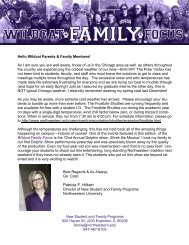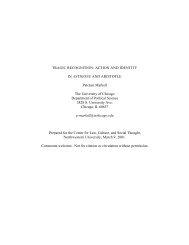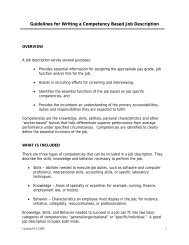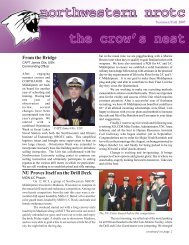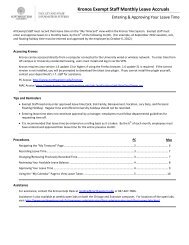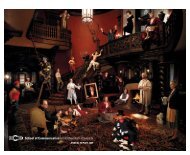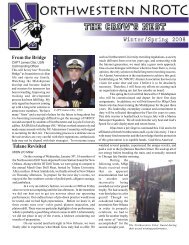Artistry Permits and Custom May Ordain - Northwestern University
Artistry Permits and Custom May Ordain - Northwestern University
Artistry Permits and Custom May Ordain - Northwestern University
You also want an ePaper? Increase the reach of your titles
YUMPU automatically turns print PDFs into web optimized ePapers that Google loves.
8<br />
The social <strong>and</strong> economic communality of Swahili society, across thous<strong>and</strong>s of<br />
kilometers of coastline, is unique in Africa. Swahili civilization developed maritime<br />
commercial hubs at various points on the coast, shifting through time but always<br />
projecting wheel-like spokes to distant towns <strong>and</strong> cities. 5 Multidirectional spokes<br />
connecting rural regions to the major city-states crossed the entire East African coast<br />
before the twentieth century. Though no single state—except for the sultanate of<br />
Zanzibar in the 1800s—exercised military hegemony over the coastal towns, a macroscale<br />
network of commercial <strong>and</strong> social relations, facilitated by oceanic travel, functioned as a<br />
taut web of Swahili interaction in the precolonial period. In the fifteenth <strong>and</strong> sixteenth<br />
centuries the cohesiveness of intra-Swahili socioeconomic relations <strong>and</strong> spheres of<br />
interaction was apparent in a community of material culture that remained relatively<br />
constant over 3,000 kilometers of archipelagic civilization. 6<br />
In this paper I will analyze how material items—cloth in particular—both reflected<br />
social attitudes <strong>and</strong> stratification <strong>and</strong> served as culturally relative instruments for<br />
maintaining or challenging status in city-states <strong>and</strong> towns along the East African littoral. 7<br />
Taking material consumption as an index of social interaction, I will first reassess the<br />
physical extent <strong>and</strong> socioeconomic structure of earlier Swahili society. Then I will try to<br />
answer the question of how power <strong>and</strong> status were understood, maintained, <strong>and</strong> contested<br />
in the Swahili world during the fifteenth <strong>and</strong> sixteenth centuries.<br />
I define consumption as the processes involved in using materials, including<br />
socially valued modes of distribution. As such, it is a phenomenon shaped <strong>and</strong><br />
constrained by culture. 8 The consumption of material goods can engender <strong>and</strong> sustain<br />
relationships between individuals <strong>and</strong> groups in society through mutually appreciated<br />
forms of personal adornment, display, <strong>and</strong> (by extension) exchange. As Douglas,<br />
Isherwood, Appadurai, McCracken, <strong>and</strong> others have argued, goods are often acquired not<br />
5 P. Sinclair develops the idea of a “Swahili wheel” as opposed to M. Horton’s “corridor” in “The Origins of<br />
Urbanism in Eastern <strong>and</strong> Southern Africa: A Diachronic Perspective,” in Islamic Art <strong>and</strong> Culture in Sub-Saharan<br />
Africa. Eds. K. Ådahl <strong>and</strong> B. Salhström. Uppsala, 1995. 107.<br />
6 Material culture is here defined in a broad sense (following Geary) as: material manifestations of African <strong>and</strong><br />
extra-African ingenuity <strong>and</strong> creativity, spanning from prestige items to more accessible goods of common usage.<br />
C. Geary, “Sources <strong>and</strong> Resources for the Study of African Material Culture; Introduction,” History in Africa. 21<br />
(1994): 323.<br />
7 J. Perani has likewise traced the development of cultural congruities through the idiom of cloth consumption<br />
in “Northern Nigerian Prestige Textiles: Production, Trade, Patronage <strong>and</strong> Use,” in Man Does not Go Naked:<br />
Textilien und H<strong>and</strong>werk aus afrikanischen und <strong>and</strong>eren Ländern. Basel, 1989. 65-76.<br />
8 After Rutz <strong>and</strong> Orlove, “Thinking About Consumption: A Social Economy Approach,” in The Social Economy<br />
of Consumption. Eds. H. Rutz <strong>and</strong> B. Orlove. Lanham, 1989. 1-44; <strong>and</strong> J. Carrier, Gifts <strong>and</strong> Commodities: Exchange<br />
<strong>and</strong> Western Capitalism since 1700. New York, 1995.



